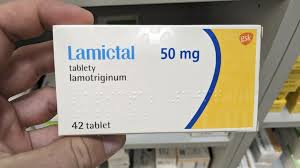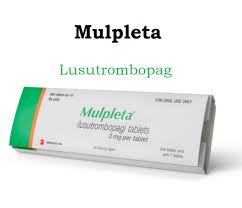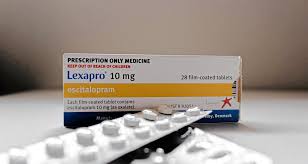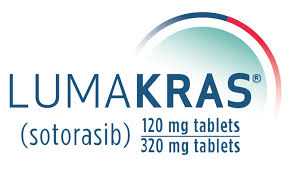Lantus
Lantus, known generically as Insulin Glargine, is a sophisticated long-acting insulin meticulously crafted to regulate blood sugar levels in those with diabetes mellitus. It is frequently prescribed for both type 1 and type 2 diabetes, offering a consistent and extended therapeutic effect.

Applications
Type 1 Diabetes:
Administered alongside rapid- or short-acting insulins to replicate the natural secretion of insulin.
Type 2 Diabetes:
Utilized independently or in conjunction with oral antidiabetic agents or other injectable diabetes treatments.
Mechanism of Action
Lantus is an advanced basal insulin analog, engineered to release insulin gradually over a 24-hour period, thereby ensuring stable blood glucose levels. It emulates the basal insulin secretion characteristic of a healthy pancreas in non-diabetic individuals.
How It Functions
Insulin glargine is uniquely modified to exhibit low solubility at physiological pH. Upon subcutaneous injection, it forms microprecipitates that allow for the slow release of insulin into the bloodstream. This results in a smooth insulin effect with minimal peaks, significantly lowering the risk of hypoglycemia.
Dosage and Administration
General Recommendations:
Lantus is to be administered once daily at a consistent time, irrespective of meal schedules.
Dosage is tailored to individual needs based on blood glucose monitoring.
Initial Dosage:
Type 1 Diabetes: Typically, 1/3 to 1/2 of the total daily insulin requirement.
Type 2 Diabetes: The starting dose is generally 10 units per day or adjusted according to body weight (e.g., 0.2 units/kg).
Injection Sites:
Administered subcutaneously in the abdomen, thigh, or upper arm, with rotation of sites to prevent lipodystrophy.
Important: Lantus must not be mixed with other insulins or solutions.
Onset, Peak, and Duration
Onset: Approximately 1 to 2 hours.
Peak: Generally minimal or absent.
Duration: Lasts up to 24 hours.
Side Effects
Common Side Effects:
– Hypoglycemia (reduced blood sugar levels).
– Reactions at the injection site (including redness, discomfort, or swelling).
– Potential weight gain.
Serious Side Effects:
– Severe hypoglycemia (which may lead to seizures or loss of consciousness).
– Allergic responses (such as rash, swelling, or breathing difficulties).
– Hypokalemia (low potassium levels), which can result in muscle weakness or irregular heart rhythms.
Warnings and Precautions
Hypoglycemia:
– This is the most prevalent and potentially serious side effect.
– Regular monitoring of blood sugar is essential, particularly during changes in dosage or modifications in diet and activity.
Insulin Overdose:
– Can lead to severe hypoglycemia, necessitating immediate intervention with glucose or glucagon.
Stress and Illness:
– These factors may influence insulin requirements. Increased blood sugar monitoring is advised during periods of illness or stress.
Liver and Kidney Function:
– Patients with liver or kidney impairment may require dosage adjustments.
Pregnancy and Lactation:
– Lantus is generally regarded as safe during pregnancy (Category B).
– It is also compatible with breastfeeding, although insulin requirements may fluctuate postpartum.
Drug Interactions
Drugs that Heighten Hypoglycemia Risk:
– Sulfonylureas, meglitinides, DPP-4 inhibitors, GLP-1 agonists.
– Beta-blockers (which may obscure hypoglycemia symptoms).
Drugs that Could Elevate Blood Sugar:
– Corticosteroids, diuretics, sympathomimetics, oral contraceptives.
Alcohol:
– Can unpredictably influence blood sugar levels, posing risks for both hypoglycemia and hyperglycemia.
Onset, Peak, and Duration
Onset: Roughly 1 to 2 hours.
Peak: Typically minimal or nonexistent.
Duration: Extends up to 24 hours.
Side Effects
Common Side Effects:
– Hypoglycemia (low blood sugar).
– Injection site reactions (such as redness, pain, or swelling).
– Possible weight gain.
Serious Side Effects:
– Severe hypoglycemia (which may result in seizures or unconscious
Monitoring Blood Glucose Levels:
It is essential to regularly assess fasting blood sugar and postprandial levels to ensure optimal management.
HbA1c:
This should be evaluated every three months to gauge long-term glucose regulation.
Electrolytes:
Keep a vigilant eye on potassium levels to prevent hypokalemia.
Storage
Before Use: Maintain in a refrigerator (36F to 46F or 2C to 8C). Freezing is strictly prohibited.
After First Use: Store at room temperature (below 86F or 30C) and utilize within 28 days. Shield from direct heat and light exposure.
Key Advantages
Offers consistent, enduring blood sugar management with minimal fluctuations.
Lowers the likelihood of nocturnal hypoglycemia in comparison to intermediate-acting insulins such as NPH.
Brands and Availability
Lantus, the brand name for insulin glargine, is produced by Sanofi.
Biosimilars like Basaglar and Semglee present more affordable alternatives.
Cost and Assistance Programs
While Lantus may carry a hefty price tag, numerous manufacturers and organizations provide patient assistance programs to alleviate costs for qualifying individuals.
Patient Counseling Tips
Highlight the significance of administering daily doses at the same time.
Instruct on proper injection techniques and the importance of site rotation.
Alert patients to the signs of hypo- and hyperglycemia and the appropriate management strategies.
Encourage regular monitoring and consistent follow-ups with healthcare professionals.






